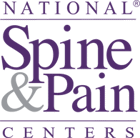
An Epidural Steroid Injection (ESI) is a treatment that decreases pain and inflammation in the neck and back.
Epidural Steroid Injections are also known as “Epidural Nerve Blocks." They can block pain signals in the neck/back in people with disc herniations, nerve injuries, or degeneration (aging) of the spine.
Spine problems that start in the neck or back may cause symptoms into an arm or leg in the form of electric shocks, numbness, or weakness. These symptoms appear when a spinal nerve is irritated. Spinal nerves are large nerves that leave the spine to reach the rest of the body, where they control body movements and a person’s ability to feel pain.
When the irritated spinal nerve is in the neck area, the condition is known as Cervical Radiculopathy. Cervical radiculopathy is treated with a Cervical Epidural Steroid Injection, a pain relief injection at the level of the neck. When the irritated spinal nerve is in the low back area, it is known as Lumbar Radiculopathy. Lumbar Radiculopathy is treated with a Lumbar Epidural Steroid Injection (see video).
Contact National Spine & Pain Centers to schedule an appointment with an affiliated pain specialist for Epidural Steroid Injection treatment today.
Do you get nervous or anxious prior to a medical procedure? Our affiliated practices now offer Nitrous Gas Analgesia (Pronox) for select treatments! Click the video below to learn more.
An ESI is the injection of pain-relief and anti-inflammation medications into the epidural space.
The epidural space is an area that surrounds the spinal cord. It contains the large spinal nerves that are responsible for pain sensations in the neck and back.
During an ESI, your pain specialist will inject corticosteroid medication into the epidural space. This reduces swelling around the spinal nerves and relieves pressure and pain in the neck and back areas.
In most cases, your pain specialist will also add a fast-acting anesthetic such as lidocaine or bupivacaine, to the ESI. This numbing medication offers immediate pain relief and may help your pain specialist find the reason for your neck/back pain.
After a local skin anesthetic is used to numb the skin at the injection site in the neck or back, a spinal needle is inserted into the epidural space. To ensure accuracy and safety, your pain specialist will perform the procedure under fluoroscopic (x-ray) guidance, using a contrast agent (a medical dye) to confirm the needle placement.
Epidural nerve blocks are performed on an outpatient basis. The procedure typically requires 20 to 30 minutes, including preparation time. It is followed by 45 minutes of observed recovery time.
Up to three injections may be given within a six-month time frame. Usually, the injections are performed two to three weeks apart. A set of three injections is normally offered. However, you may gain considerable relief after the first or second injection. In that instance, further injections may not be necessary.
An ESI is considered a safe and effective treatment for pain. In the hours following the procedure, you may have soreness for one or two days. It is recommended that you take it easy the day of the procedure but return to your usual activities the following day. The benefit from these injections will typically occur two days following the procedure.
Although the injections do not change the underlying condition, they can break the cycle of pain and inflammation and allow you to recover. These injections are commonly coupled with other treatments such as physical therapy in order to maximize the benefits and prolong the pain-relief effects. In this way, the injections can provide benefits that outlast the effects of the medicine itself.
In function of the underlying spine issue, other treatments may help a patient further recover after an ESI. For example, people with herniated discs who get pain relief from an ESI may also benefit from a longer-lasting treatment known as Radiofrequency Neurotomy. However, in some cases, back surgery may become necessary if the neck/back issue is severe.
To Learn More, Click Here To Download an Educational PDF
80% of adults will experience back pain in their lifetime. Take the FREE back pain risk assessment to understand your risk factors, and aid in preventing complications in the future.